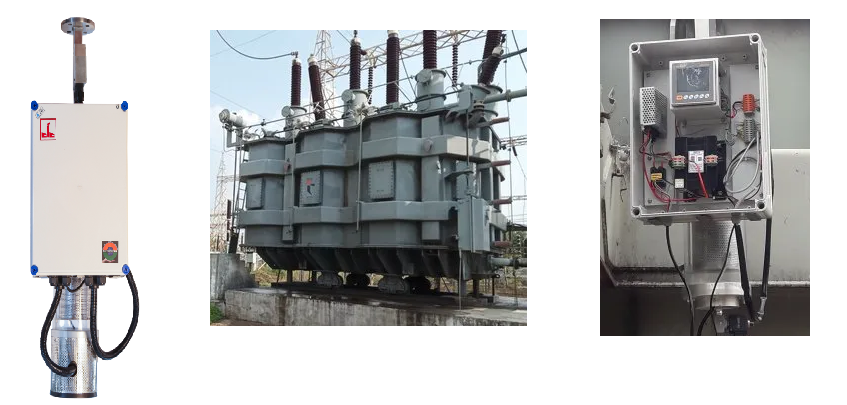Have you ever thought about how important tiny devices are in big industries? Let’s dive into one such small yet mighty technology: Online Smart Breathers. They may be small, but they’re causing a massive wave of change across multiple industries by protecting sensitive equipment and ensuring smooth operations.
Understanding Smart Breather Technology

What is a Smart Breather?
A smart breather is a high-tech device designed to protect machinery, especially transformers and large electrical equipment, from moisture and contamination. Traditional breathers relied on simple silica gel; smart breathers take it a step further by automatically adjusting their performance based on environmental conditions and sending live status updates.
How Smart Breathers Work
Think of them like highly intelligent doormen for your machinery. They let air in when needed but make sure it’s clean, dry, and just right to keep things running perfectly. Sensors monitor humidity and temperature, and if anything seems off, the system either adjusts or notifies the maintenance team.
Evolution of Smart Breathers
Traditional Breathers vs Smart Breathers
In the good old days, breathers were passive devices—basic but helpful. They used desiccant materials like silica gel to absorb moisture. However, they couldn’t predict or adapt. Today’s smart breathers can actually “think” in real-time, adapting to the environment without manual intervention.
Key Milestones in Smart Breather Development
- Early 2000s: Introduction of basic monitoring features
- 2010s: Remote monitoring capabilities added
- 2020s: AI-driven analytics and complete IoT integration gained enormous traction.
Each step has made these devices smarter, faster, and more reliable.
Latest Trends in Online Smart Breather Technology
Integration with IoT (Internet of Things)
One of the most exciting shifts? IoT integration. Smart breathers are now often connected to centralized platforms where they constantly communicate health metrics. Managers can monitor dozens (or hundreds!) of devices right from their smartphones.
AI-Powered Predictive Maintenance
Imagine if your machinery could tell you it was about to fail—before it actually does. Thanks to artificial intelligence, smart breathers can now predict potential issues based on data trends, helping businesses schedule maintenance before disaster strikes.
Real-Time Data Monitoring and Analytics
Data is the new oil. Modern smart breathers collect real-time humidity, temperature, and operational data. Then, analytics tools crunch this data to provide actionable insights, boosting efficiency like never before.
Remote Configuration and Control
No need to send a team halfway across the country to tweak a device. You can now configure and control smart breathers remotely, saving time, money, and carbon emissions.
Innovations Driving the Future
Nano-Technology in Breathers
Thanks to nanotechnology, some new breathers are built with ultra-small materials that are super effective at moisture absorption and contaminant blocking, making them lighter and more durable.
Self-Healing Smart Breathers
Yes, you read that right! Some cutting-edge breathers can self-repair minor internal damages, significantly increasing their lifespan and reliability.
Energy-Efficient Models
Eco-conscious engineering has led to energy-efficient smart breathers that consume minimal power without compromising performance—a big win for green initiatives.
Impact on Industries
Power and Energy Sector
Transformers are expensive and critical. Smart breathers extend their life, reduce outages, and save millions in potential losses, making them essential in the energy sector.
Manufacturing and Automation
In manufacturing, downtime equals lost revenue. Smart breathers ensure that the production line keeps humming, making them a hero in the automation world.
Transportation and Logistics
From freight trains to cargo ships, smart breathers are helping transportation and logistics industries safeguard their crucial machinery and infrastructure.
Challenges and Concerns
Cybersecurity Issues
With great connectivity comes great risk. Cybersecurity threats loom large, and manufacturers are racing to make devices more hack-proof.
High Initial Costs
Cutting-edge technology often means a hefty upfront investment. But companies are realizing that the long-term savings and reliability are worth it.
The Road Ahead for Smart Breather Technology
Expect smart breathers to get even more integrated, autonomous, and user-friendly as technology develops. Machine learning, enhanced nanomaterials, and 5G connectivity are all set to supercharge the next generation of devices.
Conclusion
Online Smart Breather Technology is no longer just an upgrade—it’s becoming a necessity across industries. With real-time monitoring, predictive maintenance, IoT integration, and futuristic innovations like self-healing capabilities, smart breathers are redefining equipment protection. While challenges like cybersecurity and initial costs remain, the benefits far outweigh the drawbacks. It’s clear: the future is smart, and breathers are leading the way.
FAQs
1. What exactly does an online smart breather do?
An online smart breather protects machinery from moisture and contamination by monitoring environmental conditions and adapting its performance in real-time.
2. How is IoT impacting smart breather technology?
IoT enables smart breathers to be monitored and controlled remotely, offering real-time insights, faster maintenance decisions, and enhanced operational efficiency.
3. Are smart breathers energy efficient?
Yes! Many newer models are designed to consume minimal energy while delivering optimal performance, aligning with modern sustainability goals.
4. Can smart breathers predict equipment failures?
With AI integration, smart breathers can analyze environmental data trends and predict when maintenance is needed, reducing the risk of unexpected failures.
5. Are there any risks associated with using online smart breathers?
While smart breathers offer numerous advantages, cybersecurity threats and high initial costs are notable challenges companies must address.
